Rose Aloha
The name Aloha belongs to two different varieties of roses, bred in 1949 and 2003.
2003, Kordes, apricot
Aloha is a German-bred climbing rose variety. Bred by W. Kordes & Sons "in 2003. Cross between 'Westerland' and 'Rugelda' rose Rugosa. Introduced in Canada by Palatine Roses in 2007. The registration name is KORwesrug. Synonymous names: 'Aloha Hawaii', 'Kordes Rose Aloha'. This variety harmoniously combines the ancient form and two-tone color of the flowers, as well as a delicious fragrant aroma.
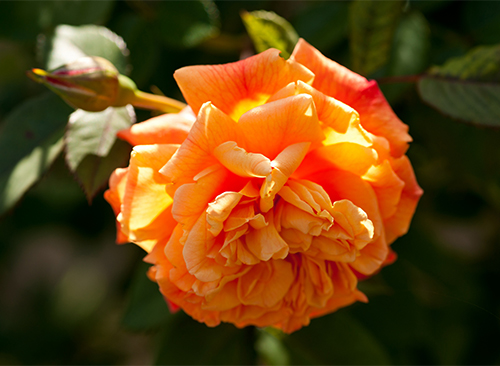
The bush is well leafy, erect, vigorous, reaches a height of 170 - 250 cm (in warm regions, the length of the shoots is more than three meters), in width - 100 cm. The shoots are strong, straight, with very thorny thorns. The leaves are semi-glossy, bright green in color.
The flowers are densely double, large (with a diameter of 9 - 11 cm), include more than 40 wavy petals. The shape of roses changes in the process of flowering from a rounded bud to rosette. The opened flowers are apricot-pink, with a richer color of the lower petals. The unopened bud has a crimson color. One brush contains 5-10 buds.
Roses in the inflorescence bloom in turn, so the break in flowering is practically not noticeable. Flowering lasts from early summer until autumn.
Aloha prefers well-lit and spacious areas, without drafts and cold winds, fertile and well-drained soil. For good growth, proper care is necessary: watering, weeding, loosening the soil (for the supply of oxygen to the roots of the rose), fertilizing, preventive spraying and sanitary pruning.
Resistance to black spot and powdery mildew is high.
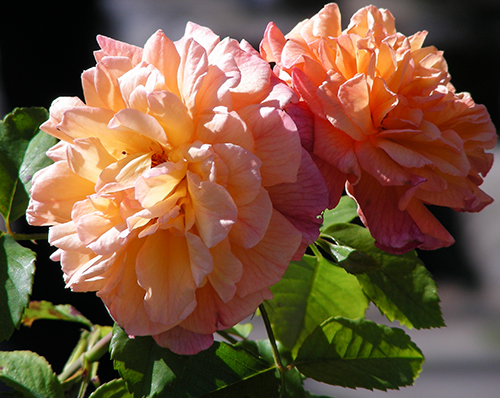
The frost resistance of this variety, according to the US Department of Agriculture (USDA), corresponds to zone 6b (minus 20.6 ° C). For the winter, it is recommended to cover this variety (with spruce branches or juniper), having previously loosened the top layer of the soil. However, this procedure is hampered by powerful, thorny and not very flexible shoots, therefore, it will take some effort to bend the roses to the ground.
Pros of the variety: resistance to diseases, unusual color, abundant flowering.
Cons: very thorny thorns, poor resistance of flowers to rain.
Aloha is an energetic large-flowered climber. Using pruning, this variety can be grown as a shrub or as a climbing rose with shoots over three meters in length. In the second case, the plant must be tied to supports. Thanks to its tall shoots, it is ideal for arches, trellises and pergolas. You can also create a live arch on the frame by alternating between the beautiful varieties - 'Rosarium Uetersen', 'Amadeus', 'Blue Moon Cl' and 'Laguna'. Do not forget to plant wonderful companions next to these roses: bells (Campanula carpatica), clematis (Clematis Jackmanii), lavender (Lavandula angustifolia), Fassen's catnip (Nepeta faassenii) and sage (Salvia officinalis), this will add depth to the composition. Also, do not forget that each plant needs a sufficient amount of space, since in dense plantings it is difficult for them to build up green mass and tie buds. In the first year of planting, it is best not to plant neighbors to the roses, but to let the plants grow stronger and form.
1949 Boerner pink
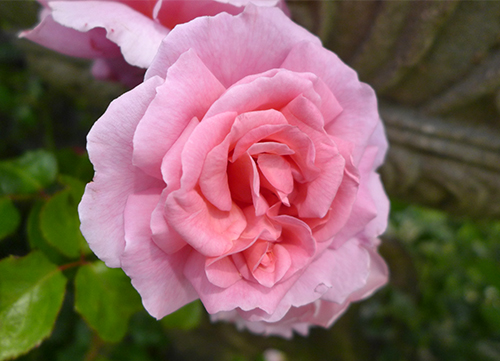
The second variety with the name Aloha was bred back in 1949 in the United States. It also belongs to climbers, but differs in color and flower shape. Derived from the cross between the 'Mercedes Gallart' Floribunda and the 'New Dawn' Vihurian hybrid. Presented by Jackson & Perkins Co. By Eugene S. Boerner. Synonymous name: 'Boerner Rose Aloha'.
The height of the bush is 245 - 305 cm, the width is 120 - 245 cm. Shoots are hard, erect. The foliage is deep green, semi-glossy.
The flowers are densely double, large (9-10 cm in diameter), contain about 50 - 55 petals. The shape of roses changes during flowering from a rounded bud to a cupped one. The color of the flowers is pink; the reverse side of the petals has a more intense color. One inflorescence contains from 1 to 3 buds. The aroma of roses is pleasant, with a slight hint of apple.
Abundant flowering, from early summer to autumn.On the shoots of the second year, flowers are located along the entire length, on the shoots of the first year of growth - only at the crown.
Medium resistance to black spot and powdery mildew. Bushes withstand partial shade well.
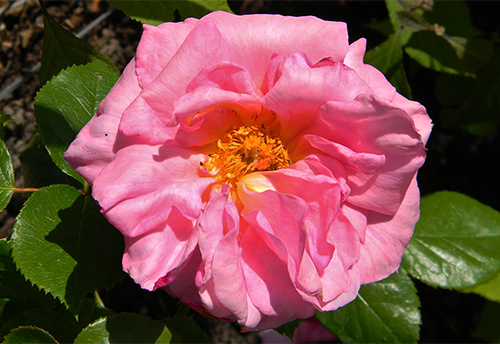
Frost resistance according to the USDA data corresponds to zone 5b (minus 26.1 ° C).
Pros of the variety: endurance, resistance to diseases and bad weather conditions.
Cons: in unfavorable conditions, it can be affected by powdery mildew and rust; in the summer heat, the petals quickly fly around.
The old variety Aloha is a luxurious large-flowered climber, which sometimes, contrary to the expectations of gardeners, can grow in the form of a bush, and not a climbing rose. For this rose to behave like a climbing rose, it must be properly shaped. It is convenient to grow it on a support - trellis, pergola, arch, hedge - because it reaches a length of three meters. By pruning, Aloha can be turned into a flowering scrub for a mixborder. This variety also looks charming with blue-flowered clematis, which can be launched directly on the rose itself, or with curly honeysuckle, which also blooms throughout summer until autumn.
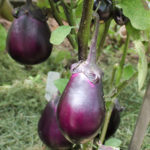








I have conflicting feelings about this rose. On the one hand, she has luxurious flowers - very bright, unusual sunny colors with a wonderful aroma (when I saw flowers, I immediately wanted to have such a variety in my rose garden), but when I managed to get a seedling, the second side of the rose opened up - the bush grows huge with a very thick shoots that are difficult to lay for the winter (they break easily), and if this is not done, then the rose will freeze to the detriment of the first flowering (of course, there should be a second later, but it is not as abundant as the first). There is also a plus - Aloha is very resistant to all common diseases.